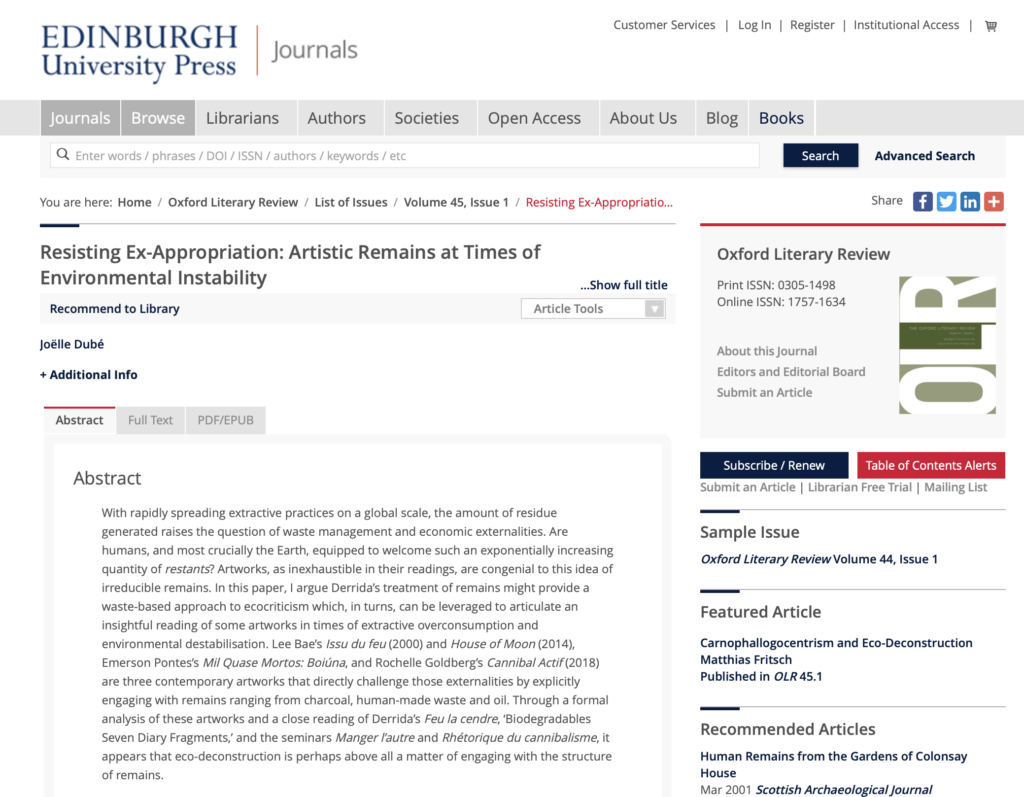With rapidly spreading extractive practices on a global scale, the amount of residue generated raises the question of waste management and economic externalities. Are humans, and most crucially the Earth, equipped to welcome such an exponentially increasing quantity of restants? Artworks, as inexhaustible in their readings, are congenial to this idea of irreducible remains. In this paper, I argue Derrida’s treatment of remains might provide a waste-based approach to ecocriticism which, in turns, can be leveraged to articulate an insightful reading of some artworks in times of extractive overconsumption and environmental destabilisation. Lee Bae’s Issu du feu (2000) and House of Moon (2014), Emerson Pontes’s Mil Quase Mortos: Boiúna, and Rochelle Goldberg’s Cannibal Actif (2018) are three contemporary artworks that directly challenge those externalities by explicitly engaging with remains ranging from charcoal, human-made waste and oil. Through a formal analysis of these artworks and a close reading of Derrida’s Feu la cendre, ‘Biodegradables Seven Diary Fragments,’ and the seminars Manger l’autre and Rhétorique du cannibalisme, it appears that eco-deconstruction is perhaps above all a matter of engaging with the structure of remains.
Dubé, Joëlle. “Resisting Ex-Appropriation: Artistic Remains at Time of Environmental Instability.” Oxford Literary Review 1, n° 45 (July 2023): 104-122.
